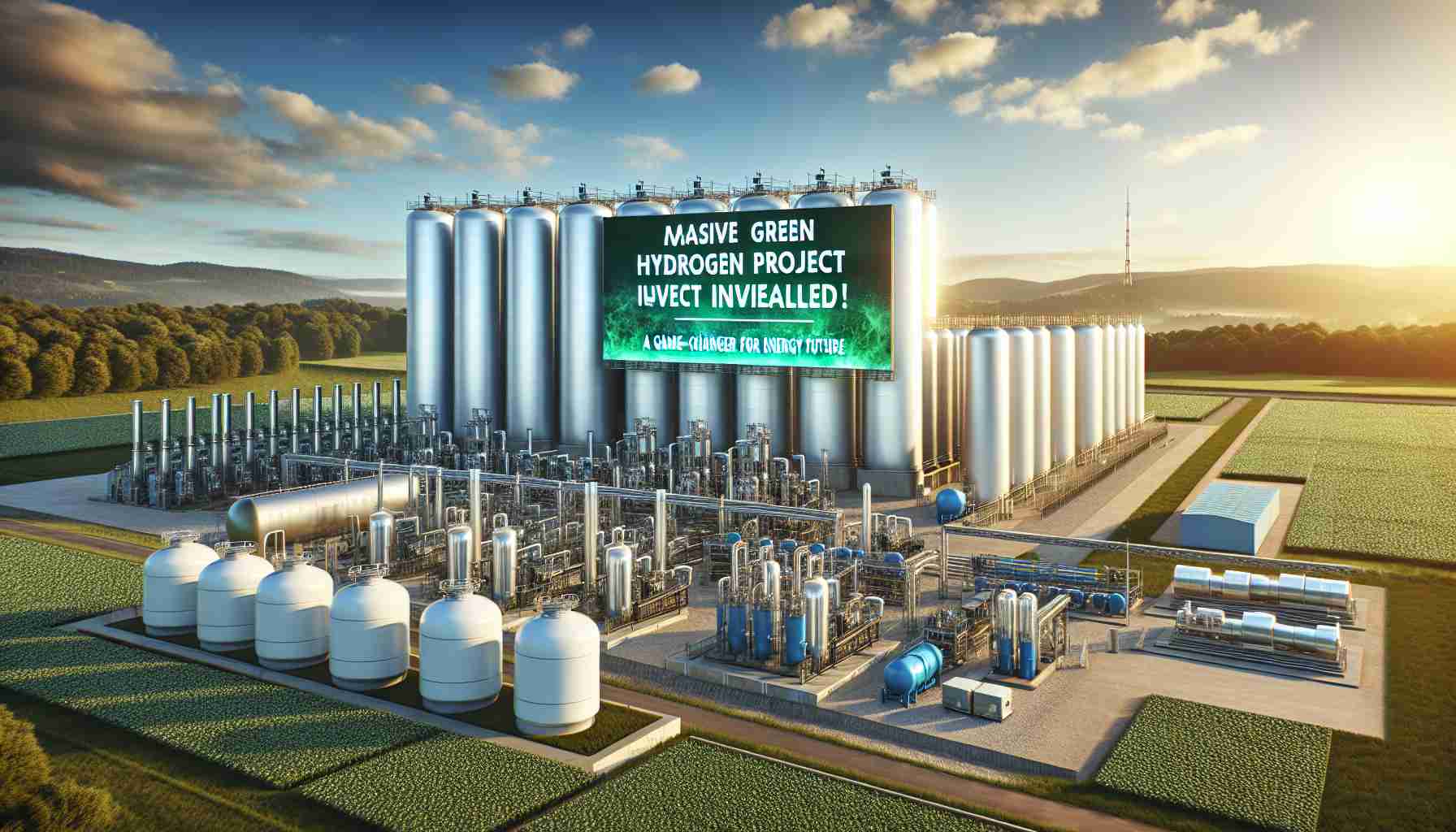Copenhagen Infrastructure Partners (CIP), based in Denmark, has teamed up with Friesen Elektra Green Energy AG to launch an ambitious green hydrogen initiative, named Project Anker, in Sande, Germany. This cutting-edge facility is set to boast an electrolysis capacity of 400 MW, with future plans to nearly double this to 800 MW.
Located strategically near Wilhelmshaven—an energy and industrial focal point—Project Anker is positioned adjacent to Germany’s future hydrogen core network. The project is projected to generate 80,000 tons of green hydrogen annually, significantly benefiting crucial sectors such as steel, chemicals, and transportation.
Powered entirely by renewable energy sources—including offshore and onshore wind, as well as solar—the project aims to replace fossil fuel reliance with green hydrogen. The environmental impact is substantial, enabling a reduction of 2.4 million tons of CO₂ emissions each year, which parallels the emissions generated by around 340,000 households.
CIP expressed optimism about Project Anker’s role in steering Germany towards carbon neutrality. They acknowledge the challenges posed by slower market development while affirming their commitment to investing in large-scale renewable initiatives.
Friesen Elektra is excited to partner with CIP in making this vision a reality, emphasizing that their collaboration represents a significant milestone toward establishing a premier hydrogen production site in Germany, aiming to fast-track the nation’s energy transition efforts.
Green Hydrogen: A Path Toward a Sustainable Future
The launch of Project Anker underscores a transformative shift not only in Germany’s energy landscape but also within the global economy. As countries scramble to meet international climate commitments, initiatives like this showcase the growing importance of green hydrogen as a cornerstone of sustainable energy systems. This project could catalyze a broader movement, driving investments in renewable energy technologies and fostering a competitive green economy.
Beyond immediate benefits, the project represents a potential paradigm shift in addressing climate change. By significantly reducing reliance on fossil fuels, green hydrogen has the potential to revolutionize heavy industry—the source of substantial carbon emissions globally. In sectors such as steel and chemicals, where electrification poses challenges, hydrogen can serve as a clean alternative, facilitating deeper decarbonization.
However, the implications are not just environmental. The push for hydrogen could also influence global trade dynamics. Countries rich in renewable resources, like Germany, may emerge as green hydrogen hubs, exporting energy to regions dependent on fossil fuels. This could reshape economic power structures, fostering a new energy geopolitics.
Looking ahead, if Project Anker achieves its ambitious targets, it could stimulate advancements in hydrogen storage and transportation technologies, paving the way for a sustainable, interconnected energy future. As markets adapt and evolve, the long-term significance of green initiatives like this cannot be overstated; they may become the foundation of a resilient, low-carbon global economy.
Project Anker: Pioneering Green Hydrogen Production in Germany
Overview
Copenhagen Infrastructure Partners (CIP) has initiated a game-changing venture in the green energy landscape with Project Anker, in collaboration with Friesen Elektra Green Energy AG. Set to establish a robust green hydrogen production facility in Sande, Germany, this initiative symbolizes a significant stride toward a sustainable energy future.
Key Features
– Electrolysis Capacity: The facility is designed to have an initial electrolysis capacity of 400 MW, with aspirations to increase it to 800 MW. This scalability could position Project Anker as a leader in hydrogen production in Europe.
– Annual Hydrogen Output: The project is anticipated to produce 80,000 tons of green hydrogen every year, catering to heavy industries like steel manufacturing, chemical processing, and transportation.
– Renewable Energy Sources: The operations will be entirely powered by renewable energy, predominantly from offshore and onshore wind farms, along with solar energy, drastically reducing dependence on fossil fuels.
Environmental Impact
Project Anker aims to significantly diminish greenhouse gas emissions, targeting a reduction of approximately 2.4 million tons of CO₂ annually. This figure equates to the emissions produced by about 340,000 households, underscoring the project’s potential environmental benefits.
Strategic Location
Situated near Wilhelmshaven, a crucial energy and industrial hub, Project Anker is conveniently located adjacent to Germany’s upcoming hydrogen core network. This strategic positioning enhances its accessibility and integration into the national energy infrastructure.
Pros and Cons
Pros:
– Major reduction in carbon emissions.
– Usage of 100% renewable energy.
– High potential for scaling production capabilities.
– Boosts local and national economy through job creation and industry support.
Cons:
– Market development challenges could slow progress.
– High initial investment costs for construction and development.
– Dependence on advancements in hydrogen technology.
Insights on Future Trends
As global demand for green hydrogen escalates, initiatives like Project Anker are becoming increasingly relevant. The European Union aims for significant hydrogen production by 2030, and projects like this place Germany at the forefront of the transition to a hydrogen economy. Furthermore, with advancements in technology and efficiencies in production, prices for hydrogen could potentially decrease, making it an attractive option for various industries.
Predictions and Market Analysis
Analysts predict that the hydrogen market will grow exponentially in the coming years, driven by heightened awareness of climate change and the push for renewable energy solutions. Project Anker stands as a testament to the commitment of private partnerships towards achieving carbon neutrality and could inspire similar projects globally.
Conclusion
Project Anker is poised to play a pivotal role in Germany’s green energy transition, making noteworthy contributions towards a sustainable codependency on hydrogen in various industrial sectors. With ambitious targets for both production and emissions reduction, this initiative not only reflects the ambitions of its investors but also Germany’s commitment to leading the charge against climate change.
For additional information on renewable energy initiatives, showcase here.


